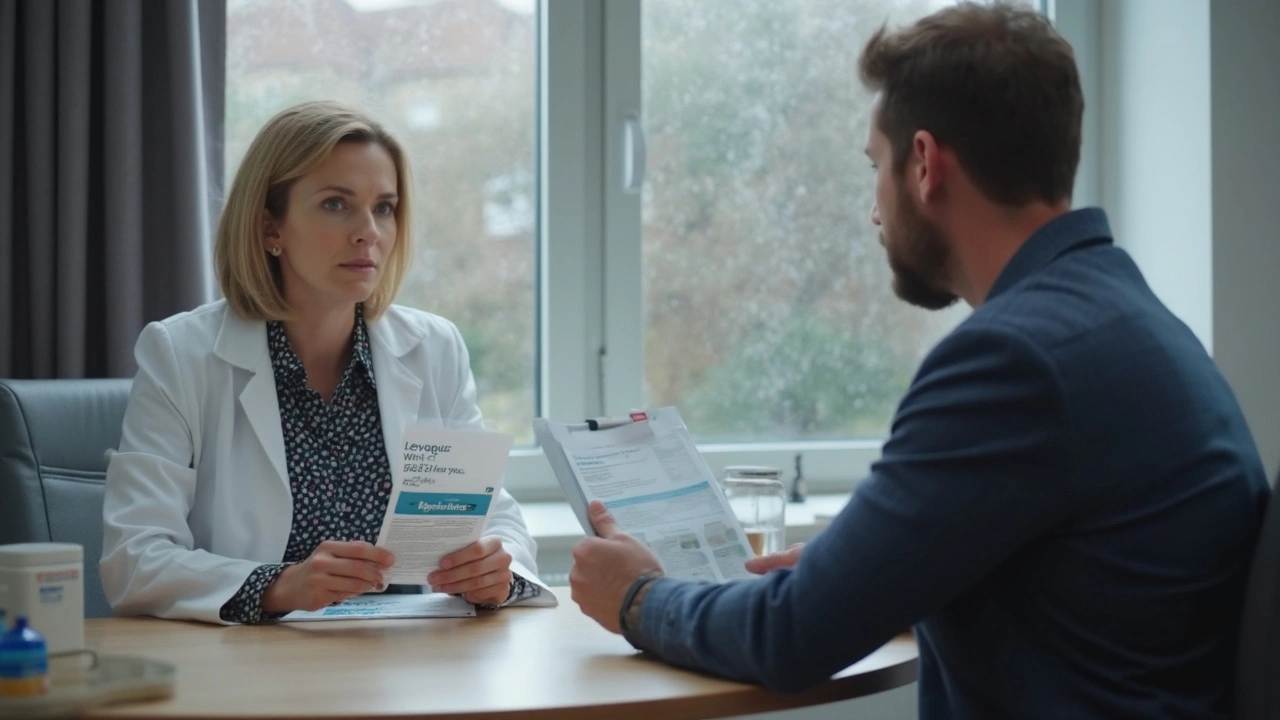Levaquin (levofloxacin): what you need to know
Levaquin is the brand name for levofloxacin, a commonly prescribed fluoroquinolone antibiotic. Doctors use it for a range of bacterial infections—like bronchitis, pneumonia, complicated urinary tract infections, some skin infections, and even as a treatment option in certain anthrax exposures. It kills bacteria by stopping them from copying DNA.
How Levaquin is used
Levaquin usually comes as a tablet or oral solution and is often taken once a day. Doses vary by infection: lower doses for simple urinary infections, higher doses for pneumonia or complicated cases. Typical adult doses range from 250 mg to 750 mg once daily, and courses run from a few days to two weeks depending on the problem. Always follow the exact dose and length your doctor prescribes—stopping early can let bacteria survive and return stronger.
Take Levaquin with water. You can take it with or without food, but avoid dairy or calcium-fortified juices right at the same time. Antacids, iron, calcium or multivitamins can stop your body from absorbing the drug, so separate them by at least 2–4 hours.
Safety, side effects, and precautions
Levaquin is effective, but it can cause serious side effects in some people. Common, mild effects include nausea, headache, and diarrhea. More serious risks include tendon pain or rupture (especially the Achilles tendon), nerve damage causing numbness or tingling, mood changes, and a small risk of heart rhythm changes (QT prolongation). If you notice sudden tendon pain, new numbness, severe dizziness, or signs of an allergic reaction, stop the drug and contact your doctor immediately.
People on corticosteroids, older adults, or those with kidney problems have higher tendon rupture risk. Avoid Levaquin if you’re pregnant or a child unless a specialist says it’s necessary. Also tell your provider about other meds—warfarin, certain heart drugs, and some antidepressants can interact with levofloxacin.
Don’t use Levaquin for viral illnesses like the flu or common cold. Using antibiotics unnecessarily promotes resistance, making future infections harder to treat. If your doctor prescribes Levaquin, finish the full course unless advised otherwise.
Practical tips: take it at the same time each day, avoid heavy sun exposure (it can increase sensitivity), store the medication at room temperature away from moisture, and keep all follow-up appointments so your provider can check how well the treatment is working.
If a fever lasts more than 48–72 hours despite treatment, symptoms suddenly worsen, or you develop new severe symptoms—call your doctor. With the right use, Levaquin can clear bacterial infections effectively, but paying attention to warnings and interactions keeps treatment safe.





